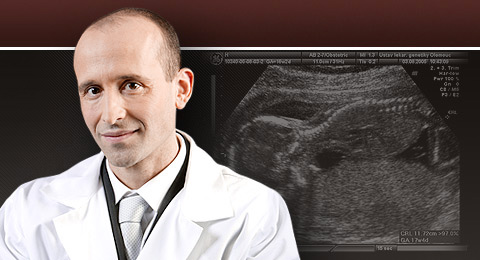Ľubušký M., Šimetka O., Studničková M., Procházka M., Feketevíziová L., Ordeltová M., Langová K. Fetomaternální hemoragie při porodu císařským řezem. Čes. Gynek., 2012, 77 (2), s. 156-162. (Fetomaternal haemorrhage in delivery by cesarean section)
ABSTRACT
Objective: To determine the incidence and volume of fetomaternal haemorrhage (FMH) in normal vaginal delivery and in delivery by cesarean section. Determination of these parameters would enable optimalization of guidelines for RhD alloimmunization prophylaxis. Design: A prospective cohort study. Setting: Palacky University Hospital, Olomouc, Czech Republic; University Hospital, Ostrava, Czech Rebublic. Methods: A total of 4862 examinations were performed. The volume of fetal red blood cell (RBC) entering maternal circulation in normal vaginal delivery (control group, n = 3295) and in delivery by cesarean section (risk group, n = 1567) was assessed by flow cytometry. FMH = fetal RBC volume; fetal blood volume si double (expected fetal hematocrit is 50%). Results: The fetal RBC volume diagnosed in maternal circulation after delivery ranged from insignificant FMH < 0.1 ml to excessive FMH = 65.9 ml (median 0.7; mean 0.79; SD 1.38). High values of FMH > 1.7 ml were observed in 5.8% cases (280/4862), FMH > 2.0 ml in 3.2% (157/4862), FMH > 2.0 ml in 1.4% (69/4862) and excessive FMH > 5ml (IgG anti-D insufficient dose 100 µg) in 0.25% (15/4862). Delivery by cesarean section presented a higher risk of incidence of high values of FMH > 1.7 ml (OR 1.6; p 0.0002), FMH > 2.0 ml (OR 2.2; p <0.0001) and FMH > 2.5 ml (OR 2.2; p 0.002) when compared with normal vaginal delivery. It did not, however, present a statistically significant risk factor for the incidence of excessive FMH > 5ml. Conclusion: In normal vaginal delivery as well as in delivery by cesarean section, FMH less than 5 ml (10 ml of whole blood) occurs in the great majority of cases, and thus for the prevention of RhD alloimmunization, an IgG anti-D dose of 100 µg should be sufficient. Contrarily, only rarely does greater FMH occur and delivery by cesarean section does not present a risk factor. Key words: fetomaternal haemorrhage, cesarean section, RhD alloimmunization, anti-D immunoglobulin.

Contact
Professor Marek Lubusky, MD, PhD, MHA
THE FETAL MEDICINE CENTRE
Department of Obstetrics and Gynecology
Palacky University Olomouc, Faculty of Medicine and Dentistry
University Hospital Olomouc
Zdravotníků 248/7, 779 00 Olomouc, Czech Republic
Tel: +420 585 852 785
Mobil: +420 606 220 644
E-mail: marek@lubusky.com
Web: www.lubusky.com


